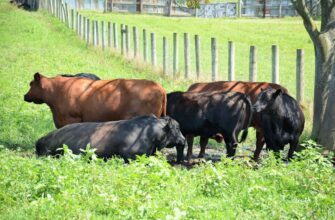- What Is ETH Yield Farming on Aave?
- Prerequisites for Farming ETH on Aave
- Step-by-Step Guide to Farming ETH on Aave
- Step 1: Connect Your Wallet
- Step 2: Deposit ETH into Aave
- Step 3: Enable ETH as Collateral (Optional)
- Step 4: Monitor and Claim Rewards
- Advanced Strategies for Higher ETH Yields
- Key Risks and Safety Measures
- FAQ: Farming ETH on Aave
- Conclusion
What Is ETH Yield Farming on Aave?
Yield farming ETH on Aave involves supplying Ethereum to the protocol’s liquidity pools to earn passive income through interest payments and potential token rewards. As a leading decentralized finance (DeFi) platform, Aave lets users lend assets like ETH to borrowers while generating yields paid in the same asset. This guide breaks down the entire process for beginners.
Prerequisites for Farming ETH on Aave
Before starting, ensure you have:
- Ethereum Wallet: Install MetaMask or a Web3-compatible wallet
- ETH for Gas Fees: Fund your wallet with ETH to cover transaction costs (aim for 0.05–0.1 ETH)
- ETH to Deposit: Decide how much ETH you’ll supply to Aave (no minimum, but consider gas efficiency)
- Stablecoins (Optional): Useful for borrowing strategies to boost yields
Step-by-Step Guide to Farming ETH on Aave
Step 1: Connect Your Wallet
- Visit the official Aave App
- Click “Connect Wallet” and select your provider (e.g., MetaMask)
- Approve the connection in your wallet pop-up
Step 2: Deposit ETH into Aave
- Navigate to the “Supply” section in the dashboard
- Select ETH from the asset list
- Enter your deposit amount and click “Supply”
- Confirm the transaction in your wallet (check gas fees)
Step 3: Enable ETH as Collateral (Optional)
- In your “Dashboard,” toggle “Use as Collateral” for ETH
- This allows borrowing other assets against your ETH to amplify yields
Step 4: Monitor and Claim Rewards
- Track accrued interest in real-time under “Your Supplies”
- Withdraw ETH anytime or compound earnings by reinvesting
- Check Aave governance for active liquidity mining programs offering additional token rewards
Advanced Strategies for Higher ETH Yields
- Leveraged Farming: Borrow stablecoins against ETH collateral, then redeposit them to earn dual yields.
- Rate Switching: Shift between variable and stable interest rates based on market conditions.
- Staking Rewards: Convert earned AAVE tokens to stkAAVE for extra ETH-denominated yields.
Key Risks and Safety Measures
- Smart Contract Risk: Aave is audited, but exploits remain possible.
- Liquidation Danger: If ETH price drops and loan-to-value exceeds limits, collateral can be liquidated.
- Impermanent Loss: Minimal for single-asset ETH deposits but relevant in LP strategies.
- Mitigation: Use health factor monitors, avoid over-leverage, and start small.
FAQ: Farming ETH on Aave
- Q: What APY can I earn farming ETH on Aave?
A: ETH supply APY varies (0.5%–4% historically), influenced by market demand. Check real-time rates on the Aave app. - Q: Do I need other tokens besides ETH?
A: For basic ETH lending, no. For advanced strategies, stablecoins like USDC may be required. - Q: How often are yields paid?
A: Interest compounds continuously and is added to your balance every Ethereum block (~12 seconds). - Q: Is there a withdrawal fee?
A: No, but Ethereum gas fees apply for all transactions. - Q: Can I lose my ETH?
A: Yes, via liquidation if borrowing, or from smart contract failures. Never deposit more than you can afford to lose.
Conclusion
Farming ETH on Aave offers a streamlined path to passive crypto income. By supplying ETH, you contribute to DeFi liquidity while earning yields paid in Ethereum. Start conservatively, prioritize security, and leverage Aave’s tools to optimize returns. As with all DeFi, stay updated on protocol changes and market conditions to farm successfully.








